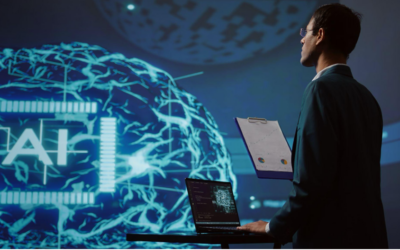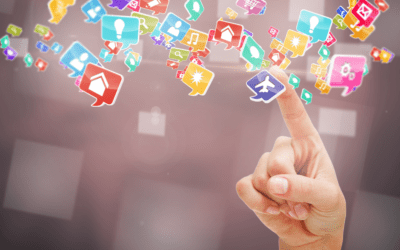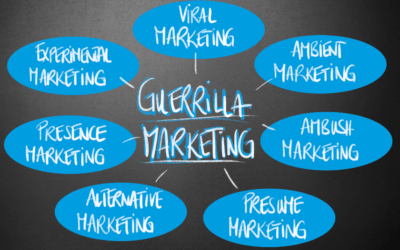Discover how AI and assistive technology are upgrading communication for diverse workplace needs. Learn about adaptive learning tools that help employees of all abilities thrive.
In our interconnected world, communication is the foundation of human interaction, shaping relationships, and businesses.
Today we take communication to a new level by exploring the diverse communication needs of people; especially people with varying learning styles, abilities, and even disabilities.
Technological advancements, especially with AI (artificial intelligence), have ushered in a new level of inclusivity thanks to innovative solutions.
Whether it’s for yourself or those in your organization, this article will help you learn the different ways to meet the communication needs of various people.
What Is “Accommodating Diverse Communication Needs?”
Accommodating diverse communication needs means creating inclusive environments where people with different abilities and learning styles can exchange information.
It’s making fewer assumptions about what people can do and simply providing more tools for people to understand and convey insights.
Examples include:
- Accessible formats (examples: audio, braille, sign language, text-to-speech/speech-to-text)
- Convenience technologies (examples: alternative keyboards and adaptive mics, braille converters, Color Contrast and Magnification Software)
- Personalized support systems (to ensure everyone—regardless of sensory, cognitive, or physical abilities—can fully participate in conversations, education, and the workplace).
As you can see, accommodating diverse communication needs is about placing assets in your workplace that make sharing and receiving information easier for different people.
For those with hearing impairments, accommodations might include real-time captioning on training videos, sign language interpreters, or hearing assistive technologies.
Those with visual impairments may benefit from screen readers, braille displays, or audio descriptions.
With technology advancing so fast, artificial intelligence (AI) is bridging communication gaps, and making interactions more seamless.
Before we talk more about these technologies though, let’s explore the different learning styles.
By knowing these styles, you can better position your training, reporting, and meeting assets for maximum understanding.
Understanding Diverse Learning Styles
Recognizing that individuals absorb and process information differently is key to creating an inclusive, productive, and educational work environment.
The “VARK model” describes 4 types of learning styles:
- Visual Learners – Those who prefer using images, maps, and graphic organizers to understand new information.
- Auditory Learners – Those who benefit from listening to lectures, discussions, and audio materials.
- Reading/Writing Learners – Those who learn through reading and writing activities.
- Kinesthetic Learners – Those who grasp concepts best through hands-on experiences and real-life, tangible examples.
If you want a more inclusive learning environment for your team, start by surveying those who already work with you.
What’s the percentage of each learning type in your organization?
For potential hires, you can have them take science-backed quizzes to identify their learning style.
The better your team feels informed and valued, the more they’ll be willing to stay long-term because they’ll feel like they’re growing in their roles.
Did you know that 94% of employees say they would stay longer at a company that invests in their career development and learning opportunities? (LinkedIn Learning)
Technological Breakthroughs Catering to Diverse Learning Styles
Let’s now explore the technologies that cater to various learning preferences:
- Adaptive Learning Platforms – These AI-driven systems personalize educational content to align with different learning styles and paces. By analyzing employee interactions, they adjust difficulty levels and present information in formats that resonate most with the learner, enhancing engagement and comprehension.
- Multimedia Educational Resources – Example – Incorporating videos, podcasts, articles, graphs, interactive simulations, and infographics caters to visual and auditory learners, making complex concepts more accessible. It’s about “mixing it up” when it comes to employee education.
- Assistive Technologies – (As we mentioned) For employees with disabilities, technologies like text-to-speech software, speech-to-text applications, and screen readers ensure content accessibility. These are empowering assets for workplace expertise, meeting communication, and training.
If your organization does a lot of Zoom meetings for example, you can use AI notetaking software and share live meeting summaries with your team.
Those who have hearing disabilities or who learn better through reading information can read the meeting summary and be on the same page. This is an efficient example of employee communication.
The Numbers: The ROI and Positive Impact of Diverse Communication
Investing in diverse communication strategies isn’t just a conscious and empowering approach to the workplace—it also can bring financial, cultural, and operational benefits to organizations.
Here’s how:
- Improved Employee Productivity – Employees who can communicate effectively using tools that support their individual needs are more engaged and productive. Inclusive teams are 35% more likely to outperform their competitors and make better decisions.
- Lower Employee Turnover Rates – A Deloitte study found that organizations with inclusive cultures have a 22% lower turnover rate.
- Innovation and Creativity Boost – Diverse teams are 35% more likely to outperform their competitors because inclusive communication fosters collaboration, idea-sharing, and innovation. They’re also 6X more likely to be innovative and agile.
When teams leverage assistive technologies and prioritize communication inclusivity, organizations can achieve a significant return on investment while creating a more engaged, modern workforce.
The Future Landscape for Accommodating Diverse Communication Needs for Employees
Here are future predictions for accommodating diverse communication needs based on current trends:
- AI-Driven Workplace Accessibility – Future AI-powered tools will make workplace communication even easier by offering real-time language translation, and advanced speech recognition to accommodate employees with hearing or speech impairments.
Think of what this can do for companies that leverage overseas talent. Language barriers may be less of a bottleneck!
- VR and AR for Training and Inclusion – Virtual and augmented reality (VR/AR) will transform employee training, providing immersive learning experiences based on different needs.
- Integration of Universal Design Principles – Future workplace technologies will prioritize universal design, ensuring that accessibility is built into communication tools from the outset rather than being added as an afterthought.
Wrap-Up
AI and assistive tech are making communication seamless for everyone.
When you invest in inclusivity, you’re not just checking a box—you’re creating a team that’s more engaged, productive, and ready to innovate.
The companies that adapt now will lead industries since they retain and train their workforce more effectively.














